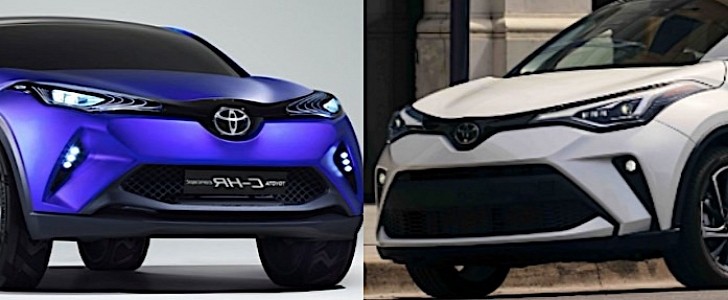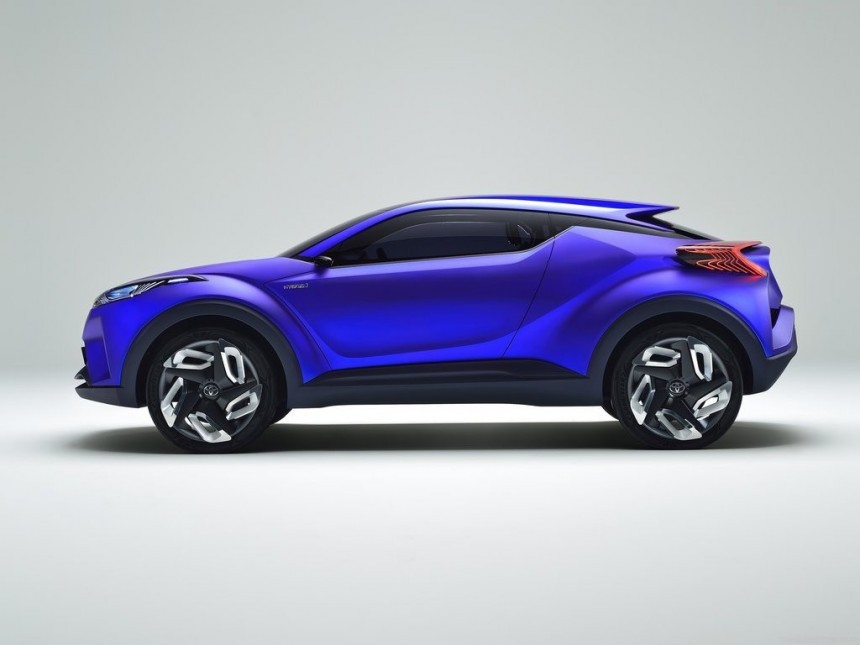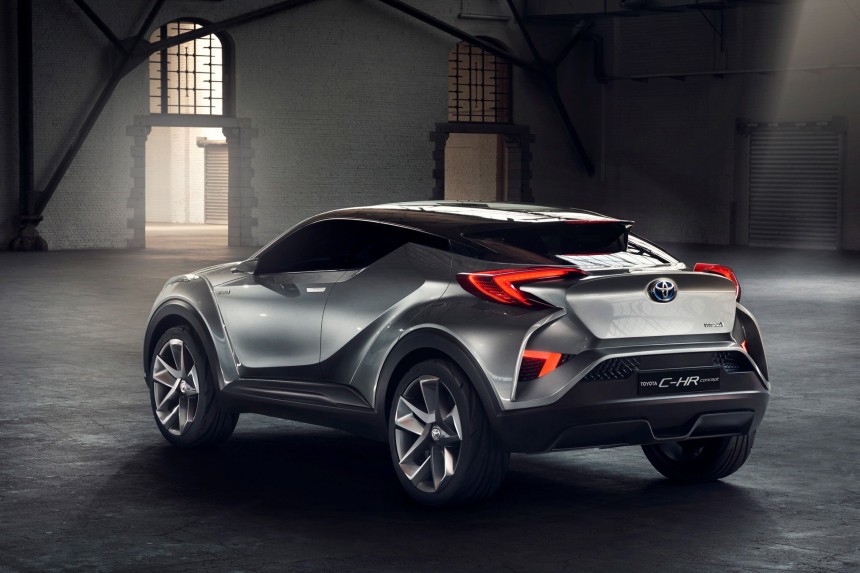While some vehicles just smoothly moved from concept to production, others had to do a rematch to pass. Such was the case with the Toyota C-HR, which needed two shows to move from concept to reality.
When Toyota unveiled the C-HR concept car at the 2014 Paris Motor Show, there were just a few to believe that it would make it into a production version. While everyone was staring at the unusual-looking compact crossover with a coupe-like shape and two doors, the carmaker tried to see if there was a place for such a vehicle on the market. But the concept to reality journey for this crossover was just beginning.
A year later, at the 2015 Frankfurt Motor Show, Toyota tried again with a four-door version. This time it was a hit. Also, it was surrounded by other new or refreshed Toyota products that showed similar headlights. Suddenly, it didn’t look that much out of place anymore. Yet, it was not as revolutionary as the Porsche Mission E concept, which later evolved into the Taycan.
The C-HR stood for either Compact High Rider or Coupe High Rider, and showed a daring design. At the front, there was this complicated front fascia, with a bumper that integrated a mesh-grille at the bottom, two side-scoops for the daytime running lights, and a slimmer upper grille that sported the badge.
On the side, it was a different story, though. It looked more like a hot hatch, but with a narrower greenhouse. The raked windshield was tilted backward so much that it resembled a sportscar more than a crossover. Its side windows were very short, like in a coupe. Who cared about the rear windows placed behind the B-pillars? Since it was a concept car, there was little concern about that.
But visitors had to look closely to see that it was a four-door coupe. Actually, five, if you count the tailgate too. Moreover, the rear doors’ handles were very well concealed. At least, that’s how they were on the concept. Fortunately, the production version abandoned those tiny rear doors and adopted something more appropriate for a car. Even though the final version didn’t look that sharp and aggressive as the concept, it helped with sales numbers.
Just a few months away from the 2015 Frankfurt Motor Show, Toyota unveiled the production version of the C-HR at the 2016 Geneva Motor Show. This time, people were relieved. The front fascia was still aggressive, with the same trapezoidal grille at the bottom of the bumper and side scoops. Its round fog lights looked like they were added to the bumper as a last-minute addition. Apart from the wheels, those were the only circular parts of the car.
Unlike the concept car, the production version didn’t have the same angled windshield, which led to a taller greenhouse. Fortunately, Toyota remembered that there are tall people on Earth too. Moreover, the rear doors were wider and received taller windows. But those door handles were (and still are) just terrible. Their shape and position made it impossible for a child to open them, as they had to be grabbed from above.
At the back, the carmaker saved the sportscar look by adding a roof spoiler and a lip at the bottom of the rear windscreen. While these details made the car more attractive, sacrifices were made for those inside the cabin. It proved that a four-door SUV it’s hardly an option in the C-segment, and it took years for Volkswagen to offer something similar, with the Taigo, but not as daring.
The C-HR was meant to be accessible in terms of money. But, unfortunately, that led to a cheesy interior with hard plastic on the doors and dashboard. True, it was good for its segment, and when I drove the car, I enjoyed the visibility. But on the back seats, it just felt claustrophobic. And it wasn’t my 6.2” (1.85m) height, but the narrow windows and tall door cards.
Yet, Toyota conquered a big segment from the younger generation. The C-HR offered the right balance with an affordable hybrid vehicle, a sporty look, and enough room for two. Its rear seats were not the best in the house, yet they were fine for short, in-town trips, mostly for two passengers. Again, Toyota delivered more than it promised, and conquered new first-time buyers who could stick to the brand thanks to its reliability. It served the same purpose as the Boxster for Porsche.
A year later, at the 2015 Frankfurt Motor Show, Toyota tried again with a four-door version. This time it was a hit. Also, it was surrounded by other new or refreshed Toyota products that showed similar headlights. Suddenly, it didn’t look that much out of place anymore. Yet, it was not as revolutionary as the Porsche Mission E concept, which later evolved into the Taycan.
The C-HR stood for either Compact High Rider or Coupe High Rider, and showed a daring design. At the front, there was this complicated front fascia, with a bumper that integrated a mesh-grille at the bottom, two side-scoops for the daytime running lights, and a slimmer upper grille that sported the badge.
On the side, it was a different story, though. It looked more like a hot hatch, but with a narrower greenhouse. The raked windshield was tilted backward so much that it resembled a sportscar more than a crossover. Its side windows were very short, like in a coupe. Who cared about the rear windows placed behind the B-pillars? Since it was a concept car, there was little concern about that.
Just a few months away from the 2015 Frankfurt Motor Show, Toyota unveiled the production version of the C-HR at the 2016 Geneva Motor Show. This time, people were relieved. The front fascia was still aggressive, with the same trapezoidal grille at the bottom of the bumper and side scoops. Its round fog lights looked like they were added to the bumper as a last-minute addition. Apart from the wheels, those were the only circular parts of the car.
Unlike the concept car, the production version didn’t have the same angled windshield, which led to a taller greenhouse. Fortunately, Toyota remembered that there are tall people on Earth too. Moreover, the rear doors were wider and received taller windows. But those door handles were (and still are) just terrible. Their shape and position made it impossible for a child to open them, as they had to be grabbed from above.
At the back, the carmaker saved the sportscar look by adding a roof spoiler and a lip at the bottom of the rear windscreen. While these details made the car more attractive, sacrifices were made for those inside the cabin. It proved that a four-door SUV it’s hardly an option in the C-segment, and it took years for Volkswagen to offer something similar, with the Taigo, but not as daring.
Yet, Toyota conquered a big segment from the younger generation. The C-HR offered the right balance with an affordable hybrid vehicle, a sporty look, and enough room for two. Its rear seats were not the best in the house, yet they were fine for short, in-town trips, mostly for two passengers. Again, Toyota delivered more than it promised, and conquered new first-time buyers who could stick to the brand thanks to its reliability. It served the same purpose as the Boxster for Porsche.












